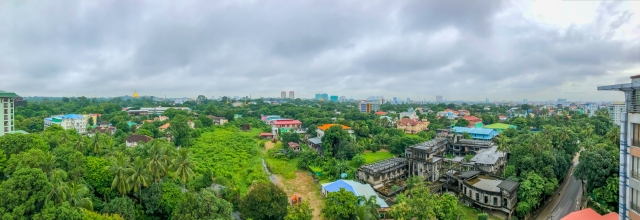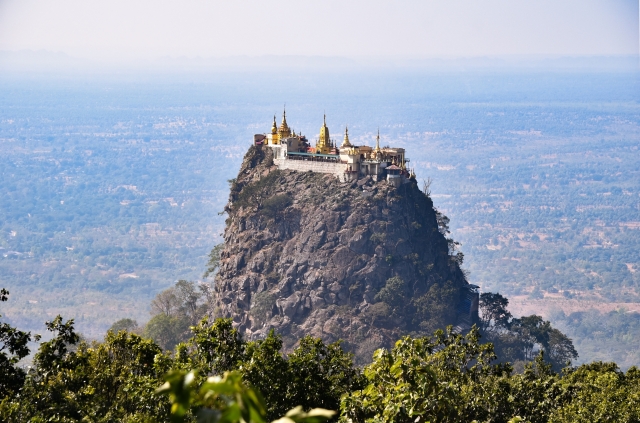Hello, colorful beans.
The country I would like to introduce this time is Myanmar.
As of February 10, 2021, international news reports the occurrence of a coup by the Myanmar military, with the detention and house arrest of Aung San Suu Kyi and other government officials.
Despite such chaotic circumstances… or perhaps because of them, let’s proceed with explaining the history of Myanmar and its connection to coffee!
Note: Please be aware that the situation in Myanmar may have evolved since my knowledge cutoff date in September 2021. It’s essential to refer to the latest news sources for the most up-to-date information.

Myanmar history
Let’s check from the position of the country of Myanmar.

Myanmar is located in the Asian region, sandwiched between Thailand and China.
It appears that humans have inhabited Myanmar since ancient times.
Going back in time, around the 8th century, there were scattered communities known as the Pyu people.
Gradually, these communities established small kingdoms, experiencing a period of cultural prosperity.
In the mid-9th century, the Bamar people migrated from Yunnan and conquered the Pyu people and other factions, establishing a dynasty in the region of Bagan.
This marked the founding of the first unified kingdom of Myanmar, the Bagan Dynasty.
Subsequently, the dynasty experienced decline and ultimately succumbed to invasions, including from the Yuan Dynasty (China). It was eventually destroyed by the Shan people.
Despite attempts by the Shan people to achieve reunification, various regional powers prevented full unification. However, in the 16th century, the Bamar people successfully achieved reunification.
Nevertheless, Myanmar’s history continued to be characterized by cycles of decline, reunification, and the rise of new dynasties.
In the 19th century, Myanmar became a British colony as a result of wars between Britain and the Burmese monarchy.
During World War II, Myanmar became embroiled in the war between Japan and Britain. It eventually came under Japanese rule for three years, but was subsequently re-colonized by British forces.
However, unable to resist the global wave of independence, Myanmar also saw a growing desire for independence.
Aung San, the father of Aung San Suu Kyi, who repeatedly fought for independence, gained control over the Myanmar military. Through negotiations with Britain, independence was achieved on January 4, 1948.
As a result, the Union of Burma was established, and General Aung San, who had taken leadership, was assassinated, leading to ongoing rebellions by ethnic minorities.
A coup led by General Ne Win, who was the Commander-in-Chief of the Burmese Armed Forces, transitioned Myanmar into a socialist system.
Isolationist policies were implemented, and an emphasis was placed on self-sufficiency within the country.
Throughout this period of time, Myanmar experienced rebellions, civil wars, and coups, shaping its history.
The country faced economic decline, opposition forces against the state, and movements for democratization, leading to internal turmoil. In 1988, a military coup led to the collapse of Burma.
Subsequently, a military-dominated regime took control, and the country’s name was changed from Burma to Myanmar.
Currently, there is a democratic movement led by Aung San Suu Kyi. Suu Kyi achieved a landslide victory in the elections. The process of democratization is still in its early stages, spanning about four to five years.
In 2021, another military coup erupted in Myanmar. However, the military’s intention behind the coup is to claim electoral fraud in the preceding elections, alleging a violation of civil rule and demanding a redo of the elections.
Historically, countries that have been under socialist regimes or military dictatorships require time and direction adjustments by the military. It is not an easy transition to modern democracies like Japan or the United States. It may still take some time before Myanmar can fully transition.
Myanmar coffee history
Coffee cultivation in Myanmar is said to have begun in 1855 when British missionaries introduced coffee farming knowledge to the region.
Due to Myanmar’s history as a British colony, tea culture thrived, which might have influenced the preference for tea over coffee.
Coffee consumption in Myanmar is not very high.
Myanmar is located close to the equator and has a hot and humid climate. It stretches from north to south, experiencing significant temperature variations, much like the temperature differences between Japan’s Okinawa and Hokkaido.
Due to its relatively cool highland areas, the cultivation of Arabica coffee seems to be predominant in Myanmar.
Just like in Japan, Myanmar’s coffee is still relatively unknown globally, with limited information and distribution. However, in recent years, the quality has been improving, and Myanmar’s coffee beans have started to garner attention.
Considering that not many countries in the Asian region produce coffee, it might be worth trying when you come across it.

Characteristics of Myanmar coffee beans
Certainly! Here’s the translation of the characteristics of Myanmar coffee beans:
Balanced flavor: Myanmar coffee beans are known for their well-balanced flavor. With the improvement in bean quality, they offer a harmonious combination of acidity, sweetness, and bitterness, resulting in a smooth and enjoyable cup of coffee.
Vibrant acidity: Myanmar coffee exhibits a vibrant acidity that is a distinctive characteristic. This acidity is fruity, bright, and refreshing, adding a lively dimension to the coffee.
Delicate aroma and flavor: Coffee beans grown in the highlands of Myanmar possess a delicate and unique flavor profile. Floral aromas and citrusy flavors are often present, enhancing the overall sensory experience.
High-quality cultivation: In recent years, Myanmar coffee farmers have focused on improving the quality of their beans. They have adopted refined cultivation techniques and processing methods, resulting in the production of high-quality coffee beans.
Diversity: Due to Myanmar’s geographical diversity, coffee beans produced in different regions showcase subtle variations in flavor. For example, Shan and Kachin states are known for their spicy and aromatic profiles.
These characteristics make Myanmar coffee distinct and appealing.
I recently came across a coffee bean called “Myanmar Sacred Mountain” and had it roasted myself. The beans were incredibly beautiful, and the washed and processed beans had a clean flavor with a refreshing texture. It was a well-balanced and easy-to-drink coffee.
It seems that when roasted dark, it also develops a chocolatey taste.

How to enjoy Myanmar coffee
In Myanmar, there seems to be a tradition of enjoying tea dating back to the British colonial era. When it comes to coffee, people tend to prefer strong coffee with condensed milk or add lime or lemon for a unique twist.
Within Myanmar, there is a prevalence of dark-roasted beans and grounds in the market. The grind tends to be fine, intentionally extracting bitterness and complexity, which pairs well with condensed milk and other ingredients. Perhaps this is why they prefer a distinct and slightly peculiar flavor profile in their coffee.
I’m glad that you were able to gain some experience with roasting and tasting coffee from Myanmar, even with your limited knowledge about the country. The article focused on the current situation, history, culture, origins, and efforts related to Myanmar, and I hope it provided you with valuable insights.
Understanding the background of a country’s history, culture, and coffee industry can bring about a new perspective and appreciation for the flavors you encounter, whether it’s a familiar taste or a coffee you’re trying for the first time.
Thank you for reading along, and you’re welcome! Keep exploring and enjoying the world of coffee. Wishing you all the best!




コメント